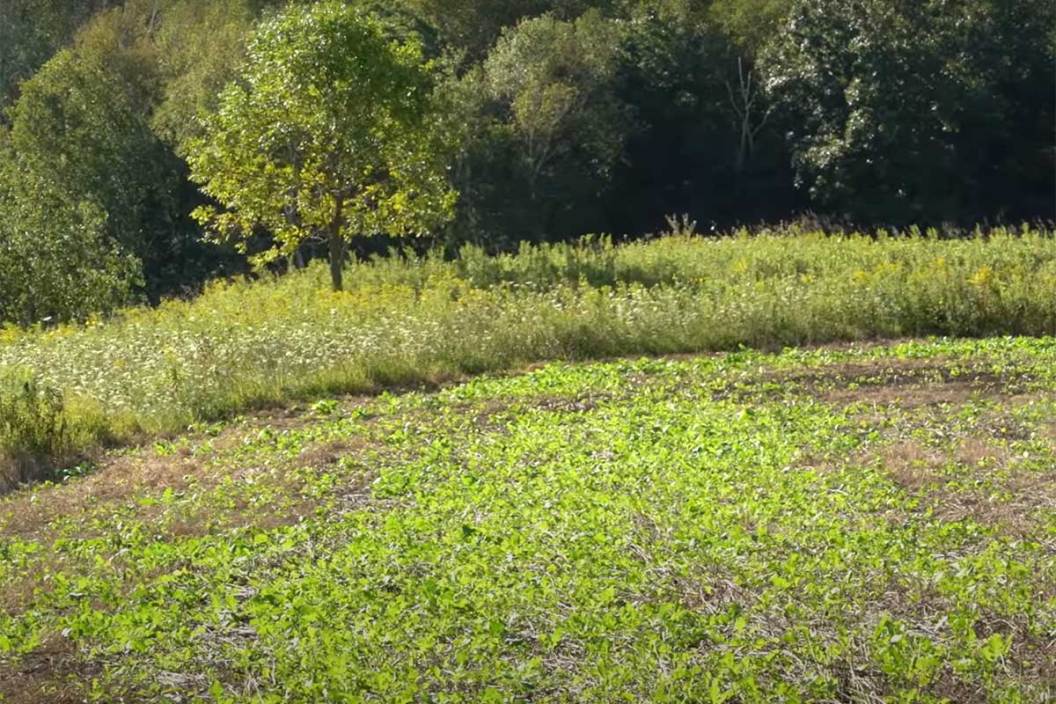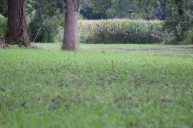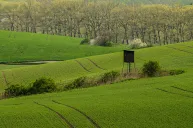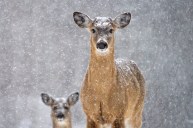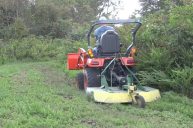Brassica is a member of both the cabbage and mustard families making it a cruciferous vegetable, and whitetail deer sure do seem to love it? It is well adapted to cold weather, can be planted with a no-till process, and are most attractive in the late summer and the fall. At this point, manufacturers have bio-engineered brassica to grow vast amounts of high-grade forage during a time of the year when whitetails crave it most, so it is well worth it. Retailers sell multitudes of different brands and blends, and it's often among the best-selling food plot crops.
Brassica produces so well (it's clear and away the best-yielding food plot crop choice for most hunters) and is very nutritious, but maybe the best part is that it is easy to plant. There are multiple varieties of brassica, and most work so well in a food plot that the manufacturers almost can't keep up with the demand for it.
Here's a little more information on brassica food plots, which will hopefully help your hunting property management efforts in the long run.
Brassica the Plant

koromelena/Getty
Brassicas are some of the most commonly cultivated vegetables around the world with some 15 varieties available. These include turnips, rutabaga, radishes, horseradish, kohlrabi, kale, bok choy, collard greens, watercress, arugula, mustard greens, cauliflower, broccoli, Brussels sprouts, and of course cabbage. Many of those sound great as a side dish for venison, but what do whitetail deer love about it so much?
Brassicas such as kale, turnips, and radishes contain up 35 percent crude protein and are highly digestible, which means that deer can utilize the nutrients efficiently and easily. This is in contrast to, say, corn which they will eat, but can be very difficult for them to digest.
For food plots, brassicas are considered a cooler season forage, planted in late summer and fall. But they also are commonly planted during the spring in the northern part of the country.
Among brassicas, digestibility is excellent when compared to other popular deer forages, but the vitamin and mineral matter is high as well.
Brassicas Beyond Deer Season
When it comes to brassicas such as turnips and radishes, (which produce a bulb and taproot that deer will eat) these plants are well adapted to cold weather and are most attractive to deer, even after a several frosts have occurred.
It is said that a high quality brassica (or combination of them) can produce the highest nutritional and digestibility levels along with the greatest amount of late season forage that deer will take advantage of. Interestingly enough, cold temperatures transform their starches into sugars to significantly raise the taste appeal for deer making them even more attractive later in the year.
What Works the Best
The honest truth is that you will need to plan, prepare, and then plant these and other wildlife attracting leafy vegetables to see what it is that really works in your home area. After all, it doesn't have to be a shot in the dark when the manufacturers have all the information that you need for their products.
Monitoring your plots is the best way to find out what the deer are doing and when. Experiment with different seeds and different brassicas to find what the deer seem to prefer. Sometimes deer will seem to ignore your offering, and at other times they dig it to the roots before you may want them to.
By watching and adjusting, you will find what works the best based on the soil conditions and the planting process. Brassicas can generally withstand light to moderate browsing pressure, but if too many deer feed on it at once without leaving enough leftover leaf matter, they may destroy it.
Please check out my book "The Hunter's Way" from HarperCollins. Be sure to follow my webpage, or on Facebook and YouTube. Go to Rack Hub and use the coupon code Craiger for a new way to display those antler sheds!
